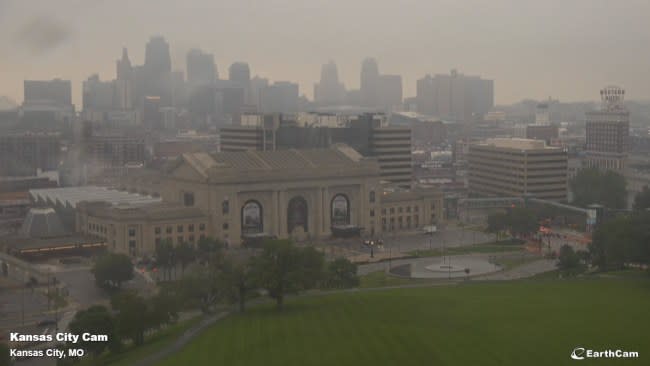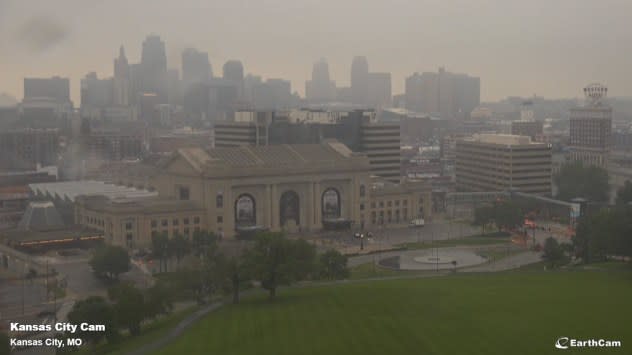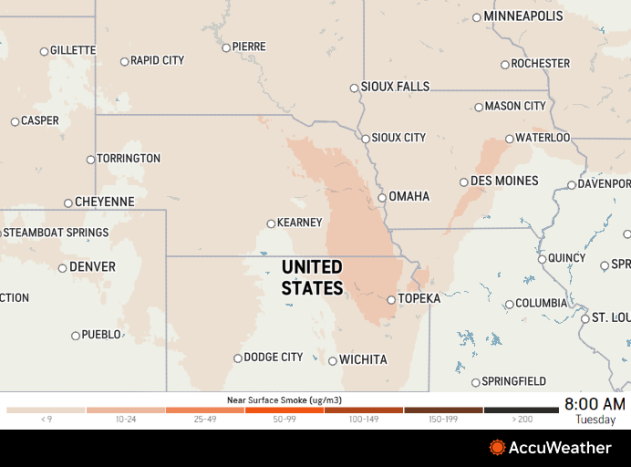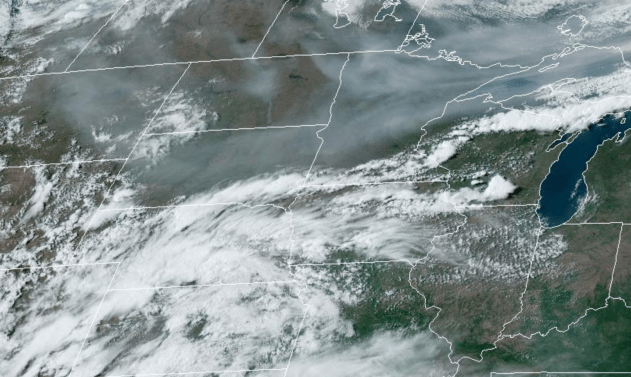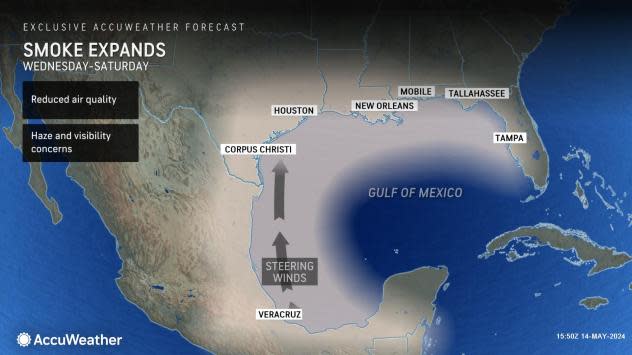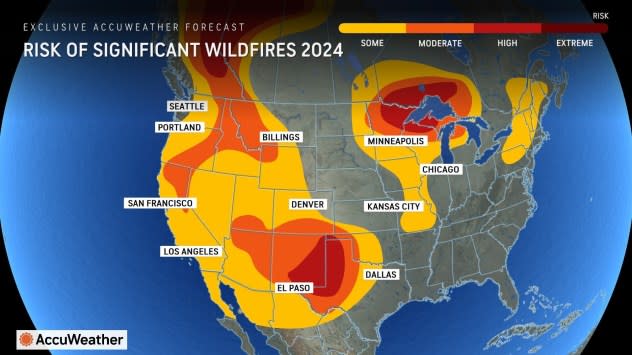Canada wildfire smoke is creating ‘unhealthy' air quality in the central, south US
 |
An Earthcam shows smoke in Kansas City, Missouri on the morning of May 14, 2024. (Earthcam) |
In a replay of last year around the same time, wildfires in Canada have become more numerous over the past week. Smoke from those fires is being carried into the northern United States and will result in hazy skies and, in some cases, poor air quality, AccuWeather meteorologists say.
Last year, large wildfires burned much of central and southern Canada and periodically sent smoke into the northern U.S. The Canadian wildfire season is expected to be near to above the historical average in terms of the number of fires and well above average in terms of the acreage burned. However, the numbers will be much less than those of the record-shattering season of 2023.
"This spring, the fires have been largely confined to British Columbia, Alberta, Saskatchewan and the Northwest Territories but have cumulatively burned more than half a million acres, with a large amount of that occurring over the past week," AccuWeather Meteorologist Brandon Buckingham said. Lingering cold weather and snow on the ground have limited fire activity in eastern Canada.
 |
A map of near-surface smoke over the central U.S. as of Tuesday morning. |
Aggressive wildfires have recently forced thousands of people from their homes, including Fort Nelson, British Columbia.
Until this past weekend, smoke from the western Canada fires has been confined to areas north of the United States border.
"Thanks to a change in upper-level winds in the atmosphere, that smoke has begun to make its way into parts of the northern Plains and the Upper Midwest," AccuWeather Senior Meteorologist Matt Benz said.
When fires occur hundreds to a thousand miles away or more, the smoke downstream tends to be high in the atmosphere, resulting in hazy or milky conditions instead of a blue sky. However, smoke at ground level was observed on Sunday afternoon.
On Tuesday morning, air quality was unhealthy due to smoke in eastern Nebraska, northeast Kansas, central Iowa and northwest Missouri, including Kansas City, where skies were smoky. People in these areas, especially those with health conditions such as asthma, should use caution when spending extended periods of time outside.
By early Tuesday morning, air quality had improved slightly but was still at poor levels from southern Minnesota and southern Wisconsin to eastern Nebraska and northeastern Kansas as the smoke traveled farther south overnight.
"What has set the situation apart is a potent cold front swept across the region Sunday and helped to transport that smoke from high up in the sky and mix it down to the surface in Minneapolis," Benz said.
This current round of smoke may remain confined to the Upper Midwest and parts of the Great Lakes and perhaps down to the central Plains over the next few days.
"A sprawling storm system, which will move from Kansas on Monday to the mid-Atlantic on Thursday, should largely help keep smoke bottled up across the northern tier of the U.S. to parts of the Great Plains through midweek," Benz said.
 |
Smoke originating from Canadian wildfires was over the north-central United States and part of the Canadian Prairies on Sunday, May 12, 2024. (NOAA/GOES-EAST) |
As long as the fires keep burning, there will be the risk of smoke extending down into the northern U.S., moving forward.
Last year, many large wildfires in eastern Canada caused multiple rounds of significant high-level smoke and low-level haze and poor air quality in New York City and much of the Northeast.
More than a thousand miles to the south, smoke from fires in Mexico will continue to spread northward across parts of the Southern states.
Some of the smoke will be hidden by clouds, rain and thunderstorms. However, the smoke will vary in intensity and height in the atmosphere. When it dips near the ground, it can lead to poor air quality. When it is elevated, the sky can appear hazy and sunrises and sunsets may be vivid.
 |
While some wildfire activity is possible in eastern Canada this year, the Canada wildfire and southward smoke threat into much of the Northeast should be significantly lower than last year.
However, a significant wildfire threat zone is forecast in part of northwestern Ontario, where drought conditions are most likely to build this summer. Smoke produced by large fires or large numbers of fires that break out in that area may be transported southeastward across the Midwest and into parts of the Northeast.
 |
Typically, wildfire season does not peak in the northeastern U.S. and southeastern Canada until the autumn and depends on the frequency of rainstorms and wind events.
Want next-level safety, ad-free? Unlock advanced, hyperlocal severe weather alerts when you subscribe to Premium+ on the AccuWeather app. AccuWeather Alerts™ are prompted by our expert meteorologists who monitor and analyze dangerous weather risks 24/7 to keep you and your family safer.
